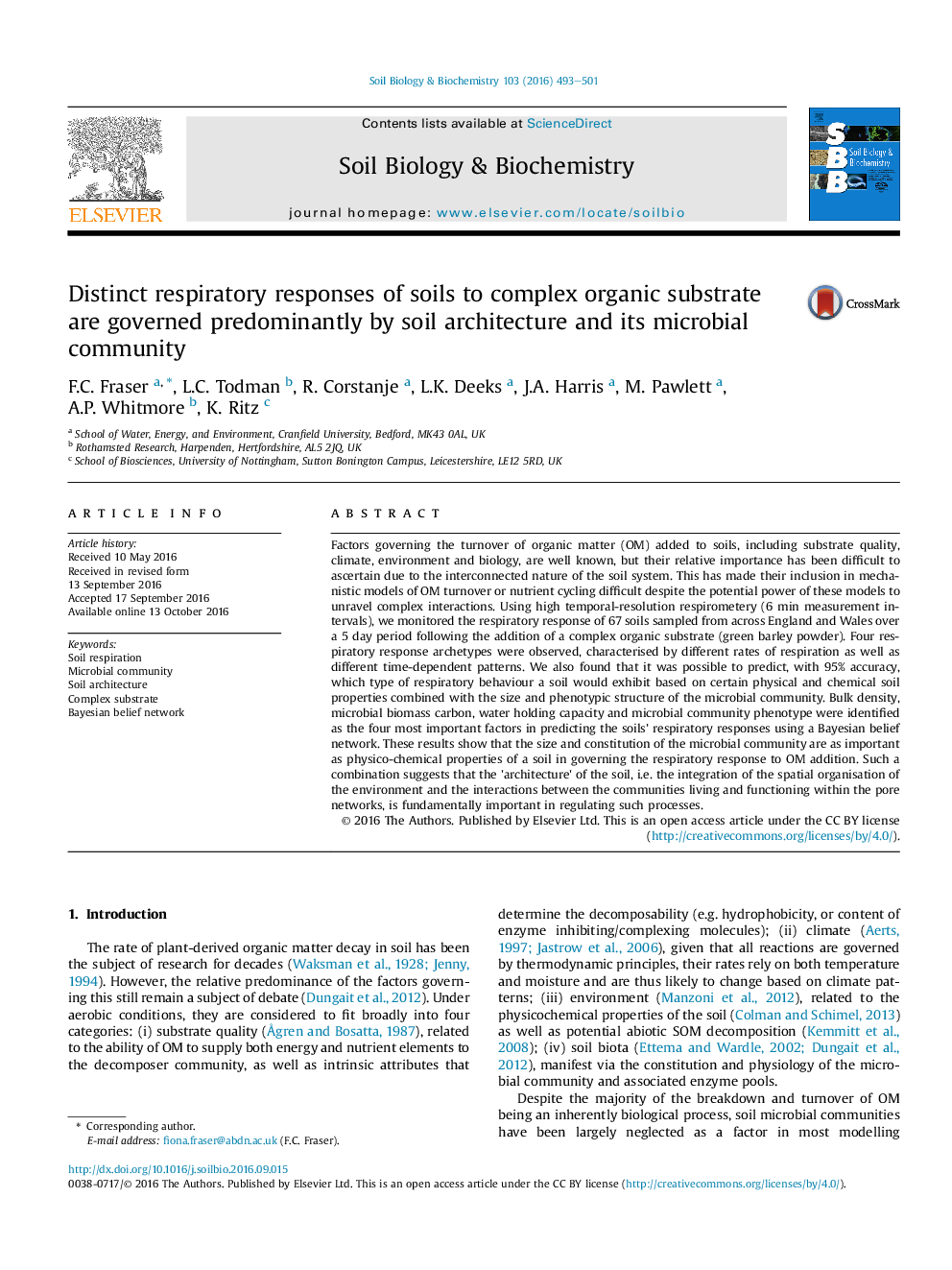| Article ID | Journal | Published Year | Pages | File Type |
|---|---|---|---|---|
| 8363365 | Soil Biology and Biochemistry | 2016 | 9 Pages |
Abstract
Factors governing the turnover of organic matter (OM) added to soils, including substrate quality, climate, environment and biology, are well known, but their relative importance has been difficult to ascertain due to the interconnected nature of the soil system. This has made their inclusion in mechanistic models of OM turnover or nutrient cycling difficult despite the potential power of these models to unravel complex interactions. Using high temporal-resolution respirometery (6Â min measurement intervals), we monitored the respiratory response of 67 soils sampled from across England and Wales over a 5 day period following the addition of a complex organic substrate (green barley powder). Four respiratory response archetypes were observed, characterised by different rates of respiration as well as different time-dependent patterns. We also found that it was possible to predict, with 95% accuracy, which type of respiratory behaviour a soil would exhibit based on certain physical and chemical soil properties combined with the size and phenotypic structure of the microbial community. Bulk density, microbial biomass carbon, water holding capacity and microbial community phenotype were identified as the four most important factors in predicting the soils' respiratory responses using a Bayesian belief network. These results show that the size and constitution of the microbial community are as important as physico-chemical properties of a soil in governing the respiratory response to OM addition. Such a combination suggests that the 'architecture' of the soil, i.e. the integration of the spatial organisation of the environment and the interactions between the communities living and functioning within the pore networks, is fundamentally important in regulating such processes.
Related Topics
Life Sciences
Agricultural and Biological Sciences
Soil Science
Authors
F.C. Fraser, L.C. Todman, R. Corstanje, L.K. Deeks, J.A. Harris, M. Pawlett, A.P. Whitmore, K. Ritz,
